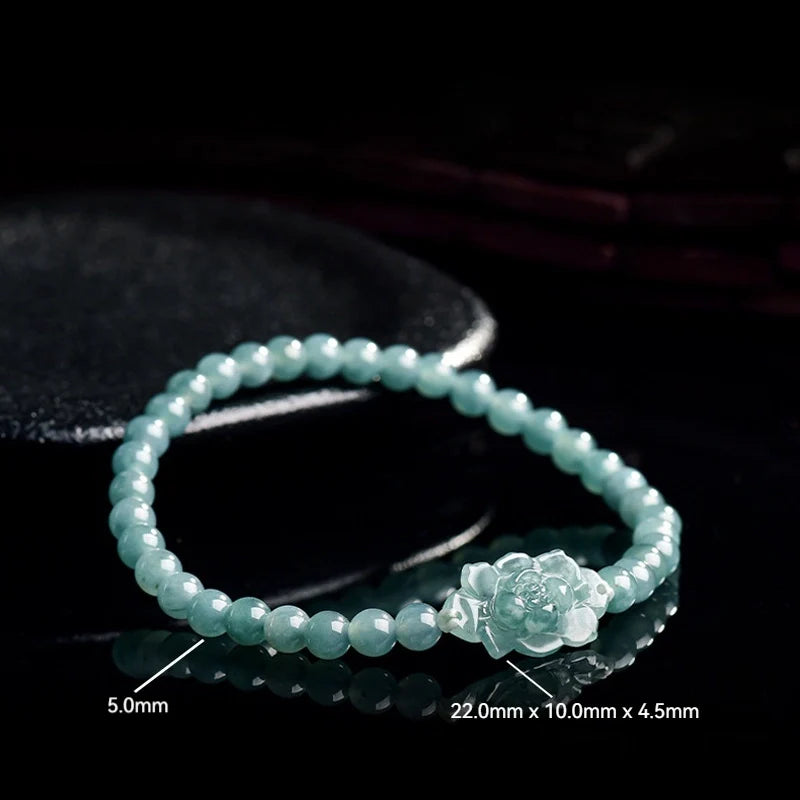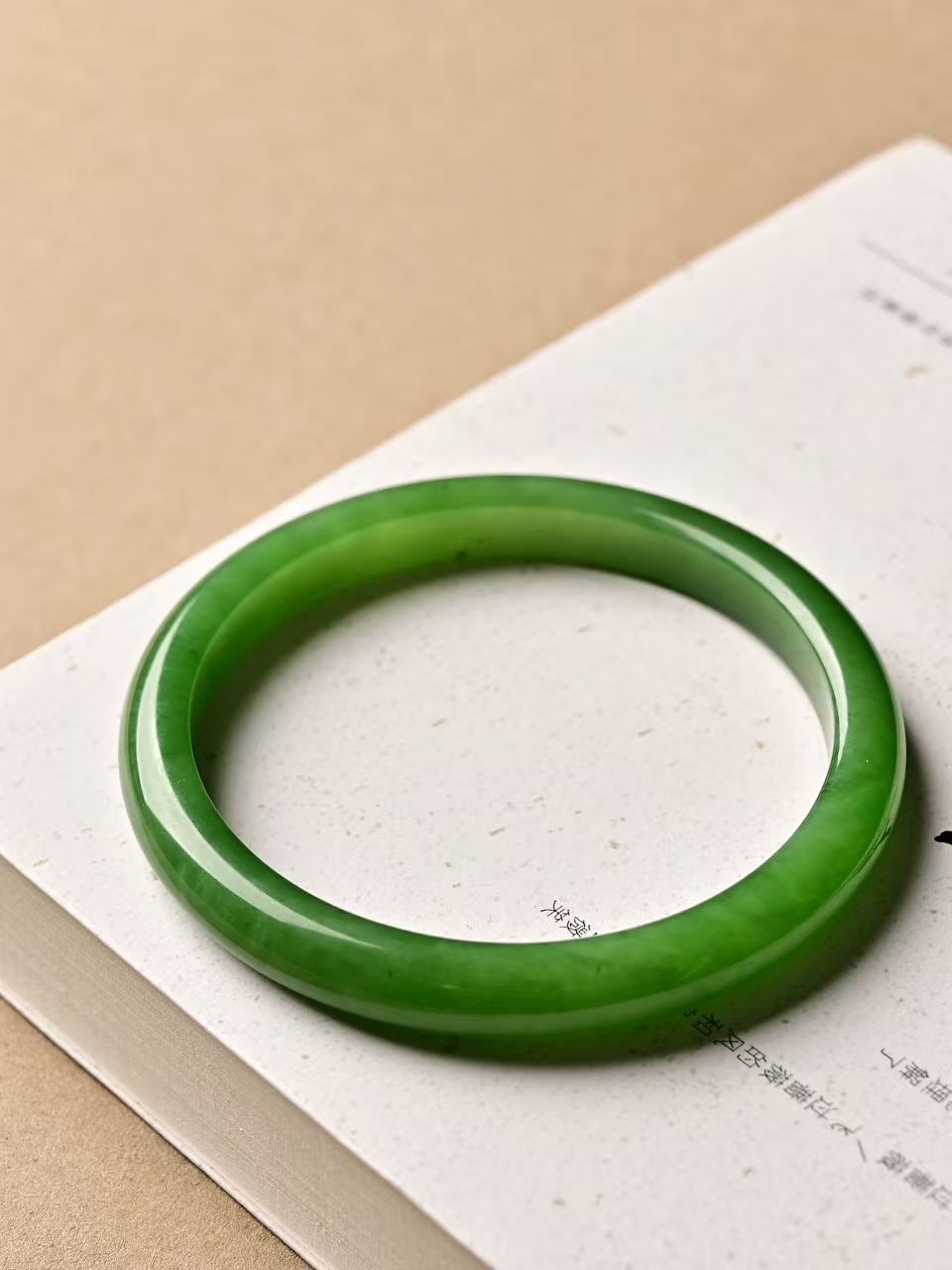Cultural Significance and Wearing Etiquette of Jade Bracelets
Jade bracelets, deeply rooted in Eastern traditions, transcend mere ornamentation. These circular symbols of harmony and prosperity carry centuries of cultural wisdom, blending aesthetics with spiritual symbolism. Understanding their etiquette reveals a nuanced interplay between tradition, health, and personal expression.
The Solo Elegance: Why One Bracelet Suffices
Ancient Chinese etiquette discourages wearing jade bracelets on both wrists, a practice rooted in folklore and practicality. The visual resemblance to handcuffs was deemed ominous, symbolizing restriction rather than freedom. This belief persists in modern Feng Shui, where dual bracelets risk disrupting personal energy flow.
From a functional perspective, dual bracelets create friction during daily activities, increasing the likelihood of scratches or fractures. Historical accounts, such as those from the Tang Dynasty’s Youyang Zazu, explicitly warn against right-wrist jade, associating it with misfortune. Even in periods like the Song Dynasty, when noblewomen flaunted paired bracelets, the trend remained exclusive to the elite, reflecting social status rather than everyday practicality.
Modern collectors often rotate bracelets to match outfits, preserving each piece’s integrity while avoiding aesthetic clutter. This approach respects both tradition and the material’s fragility.

The Hand of Choice: Left vs. Right
The debate over which wrist to adorn hinges on cultural, anatomical, and spiritual factors.
Left Wrist: The Gateway to Serenity
Traditional Chinese medicine positions the left wrist as closer to the heart, making it ideal for jade’s purported calming effects. The heart’s Pericardium Meridian runs through this area, and jade’s pressure is believed to stabilize emotions and balance energy. Buddhist philosophy further elevates the left hand as the “pure hand” (jing shou), free from worldly impurities, thus absorbing cosmic blessings.
Practical advantages also exist. Most people engage their right hand more frequently, leaving the left less prone to accidental impacts. Archaeological findings, such as 90% of Han Dynasty jade bracelets discovered on left wrists, reinforce this preference.
Right Wrist: Activating Energy
While less common, right-wrist placement aligns with the concept of “releasing energy” (chu). Some practitioners argue that jade here stimulates hand meridians, enhancing circulation and vitality. However, this remains a minority view, overshadowed by centuries of left-wrist dominance.
Ultimately, personal comfort and lifestyle dictate choice. Left-handed individuals, for instance, might reverse traditions to minimize wear.
The Art of Selection: Size, Style, and Symbolism
Precision in Sizing
A poorly fitted bracelet risks discomfort or loss. Measurements should account for bone structure rather than soft tissue. Methods include wrapping a string around the wrist’s widest point and subtracting 1–2 cm for flexibility. Professional jewelers often use calipers for accuracy, ensuring the bracelet slides on with gentle pressure but doesn’t spin freely.
Harmonizing with Aesthetics
Jade’s versatility allows adaptation to personal style and occasion.
- Color Psychology: Light green jade suits youthful energy, while deep emerald evokes sophistication. Pink oufen jade appeals to those seeking sweetness, and black moyu jade exudes mystery.
- Form Follows Function: Slender meiren bracelets flatter delicate wrists, whereas robust fangzhuo styles complement bold personalities. The iconic ping’an zhuo (flat inner ring) remains a timeless choice for its comfort and symbolic safety.
Cultural Symbolism
Jade bracelets transcend fashion, embodying wishes for longevity, marital bliss, and protection. The circular shape represents eternity, while the act of gifting a bracelet signifies enduring bonds. In weddings, they symbolize unity, echoing phrases like “he zhi qi kuo” (binding loyalty through bracelets).
Nurturing the Spirit: Care and Caution
Jade’s longevity depends on mindful maintenance.
Avoiding Physical Harm
Even hard jade (6–7 Mohs scale) fractures under impact. Remove bracelets during sports or manual labor. Store them separately in fabric pouches to prevent scratches from other jewelry.
Chemical Vigilance
Perspiration, cosmetics, and household cleaners degrade jade’s surface. Wipe with a damp, soft cloth after wear, and avoid ultrasonic cleaners, which may loosen settings. For stubborn grime, use mild soapy water and pat dry.
Environmental Balance
Prolonged exposure to heat or dryness causes cracking. Humidifiers or occasional soaking in distilled water (for non-porous varieties) restore hydration. Never leave jade in sunlight, as UV rays dull its luster.
The Bond Beyond Adornment
Wearing jade is an act of cultural stewardship. Each bracelet carries stories of craftsmanship, spirituality, and ancestral wisdom. By honoring its traditions—whether through solitary elegance, thoughtful placement, or meticulous care—we preserve not just a gemstone, but a legacy.
In a world of fleeting trends, jade endures as a testament to timeless beauty and the quiet power of intention.





